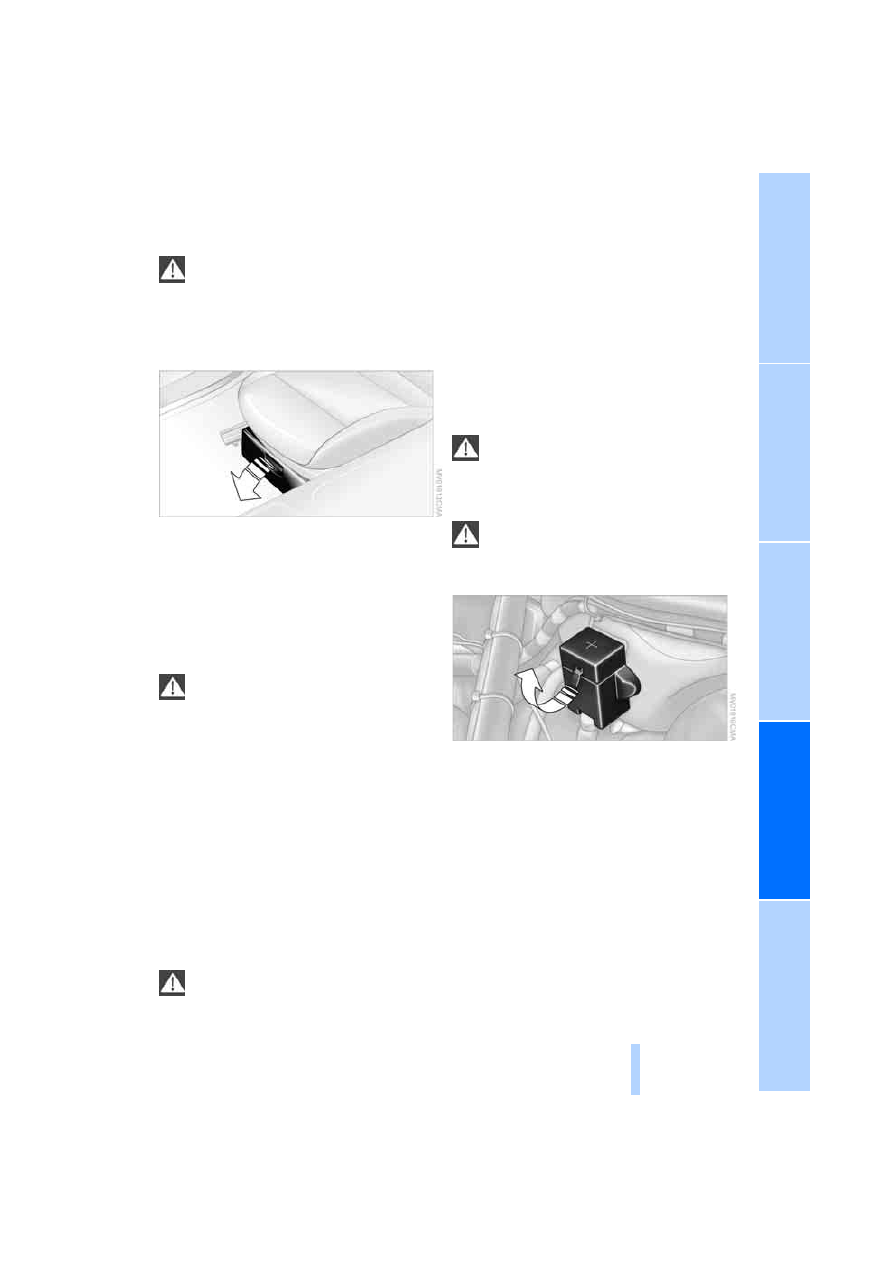BMW 3.0i Roadster & Coupe (2005 year). Instruction - part 6

97
Pull the ends of the rubber bands upward and
out of the fasteners.
Always observe all legal regulations
requiring a warning triangle to be carried
in the vehicle.
<
First-aid kit*
The first-aid kit is located beneath the passen-
ger seat.
To open
Pull the handle and fold the cover downward.
To close
Fold the cover up and engage the catch.
Some of the articles in the first-aid kit
have a limited period of use before expira-
tion. For this reason, check the expiration dates
of each of the items regularly, and replace any
with passed dates. These items can be pur-
chased in any drugstore or pharmacy.
Always observe all legal regulations requiring a
first-aid kit to be carried in the vehicle.
<
Jump-starting
When your battery is discharged you can use
two jumper cables to start your vehicle with
power from the battery in a second vehicle. You
can also use the same method to help start
another vehicle. Always use jumper cables with
fully insulated handles on the terminal clamps.
Do not touch components carrying cur-
rent on a running engine. Contact with
these components can cause fatal injury. Care-
fully observe the following instructions to avoid
personal injury and/or damage to one or both
vehicles.
<
Preparations
1.
Check whether the battery of the support
vehicle has 12 volts and approximately the
same capacity – measured in Ah. This infor-
mation is provided on the battery
2.
Stop the engine of the support vehicle
3.
Switch off all electrical accessories in both
vehicles.
Make absolutely certain that there is no
contact between the bodywork of the two
vehicles: short circuit hazard.
<
Connecting jumper cables
Always adhere to this sequence when
connecting jumper cables; failure to
observe this procedure can lead to sparks at the
battery terminals and pose an injury hazard.
<
The auxiliary jump-starting terminal located in
your BMW's engine compartment acts as the
positive battery terminal. Refer to the engine
compartment overview on page
. The cover
is marked with a
+.
1.
Open the cover of the BMW auxiliary jump-
starting terminal. Do so by pulling the tab
2.
With the
+ jumper cable, connect the posi-
tive terminal of the drained battery and the
positive terminal of the support battery.
To do this:
Connect one terminal clamp to the positive
terminal of the battery or to an auxiliary
jump-starting terminal of the support vehi-
cle.
Connect the second terminal clamp to the